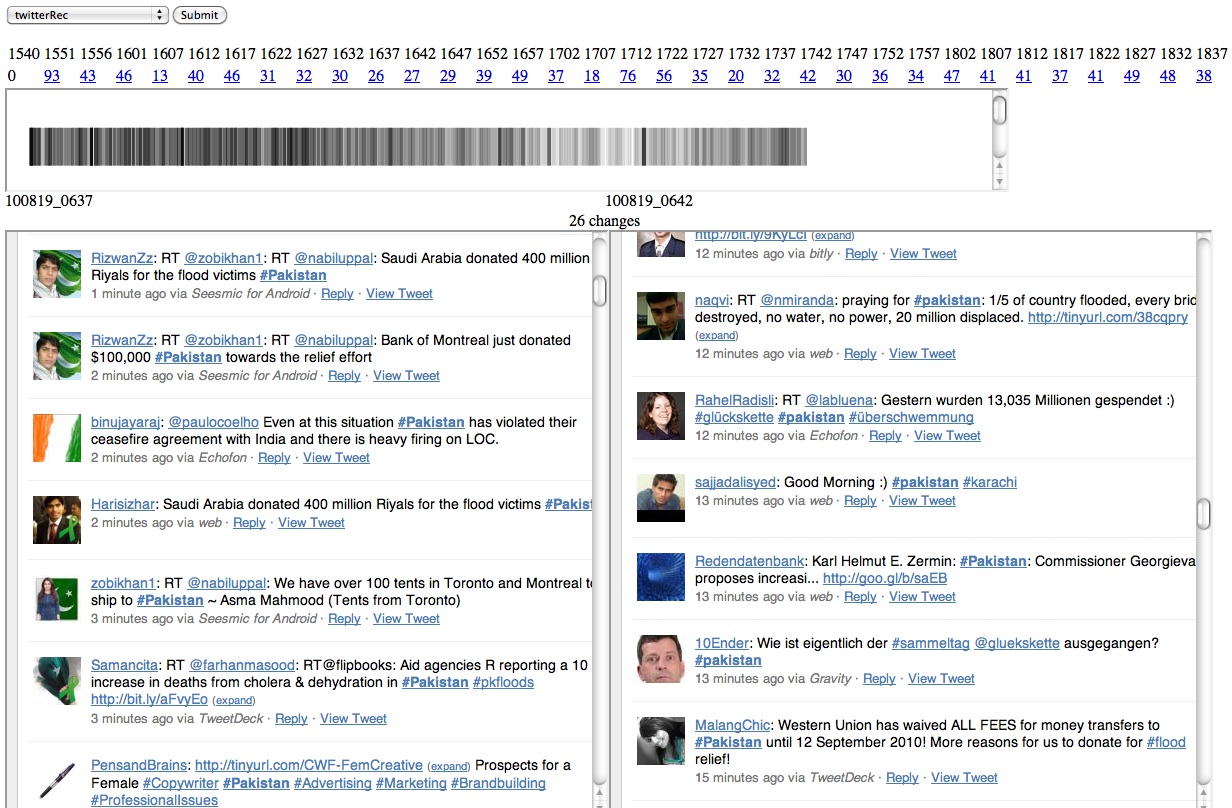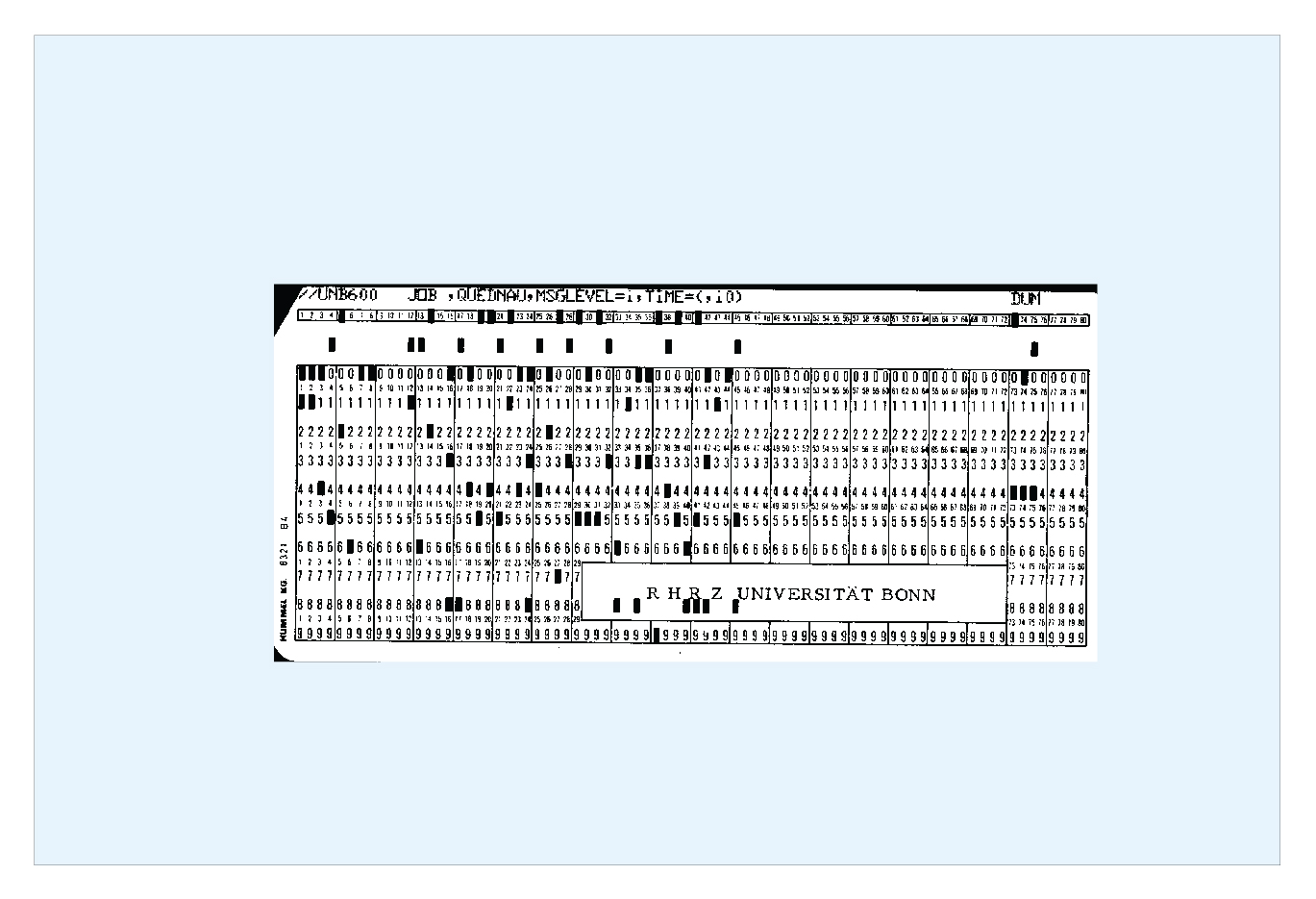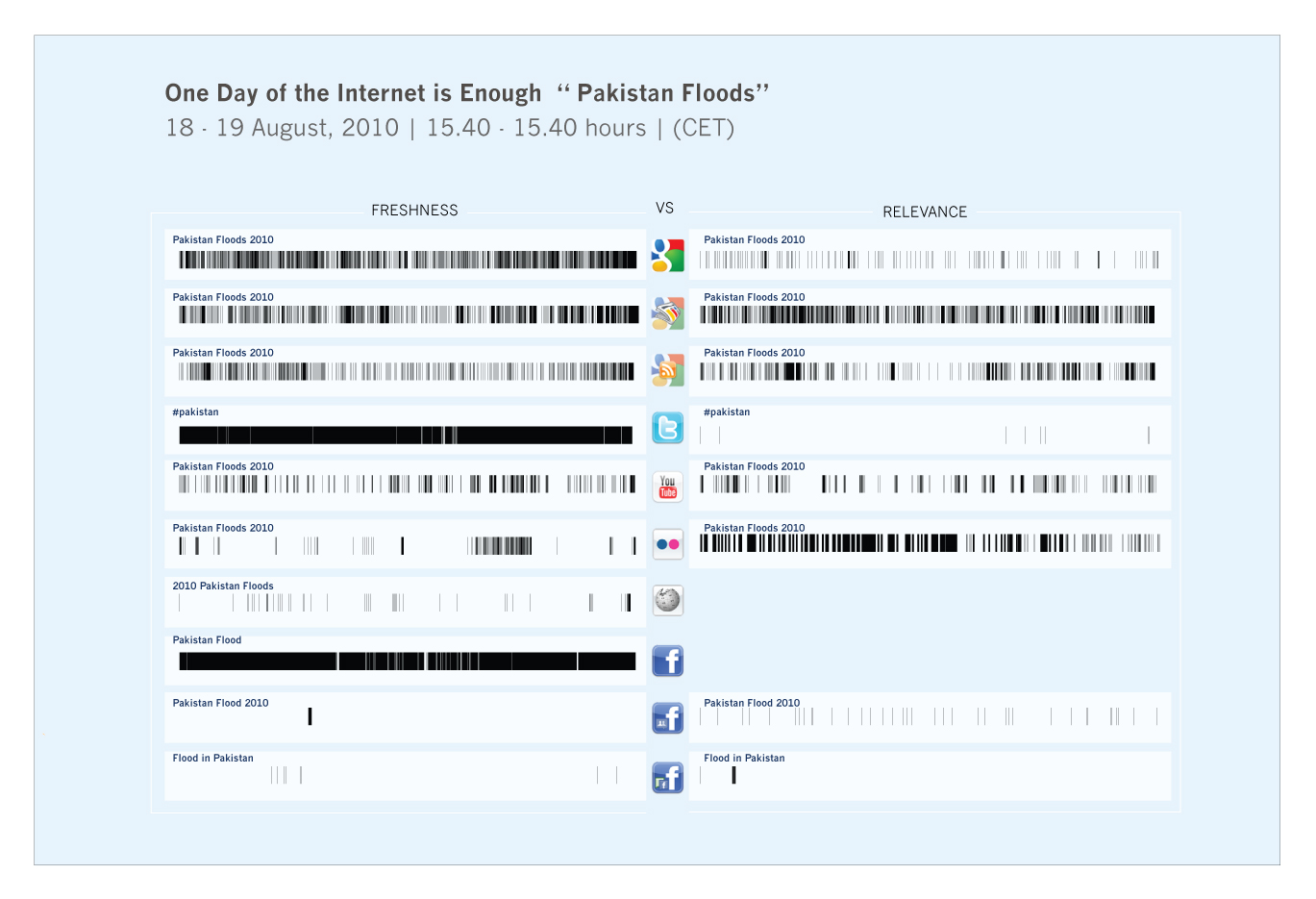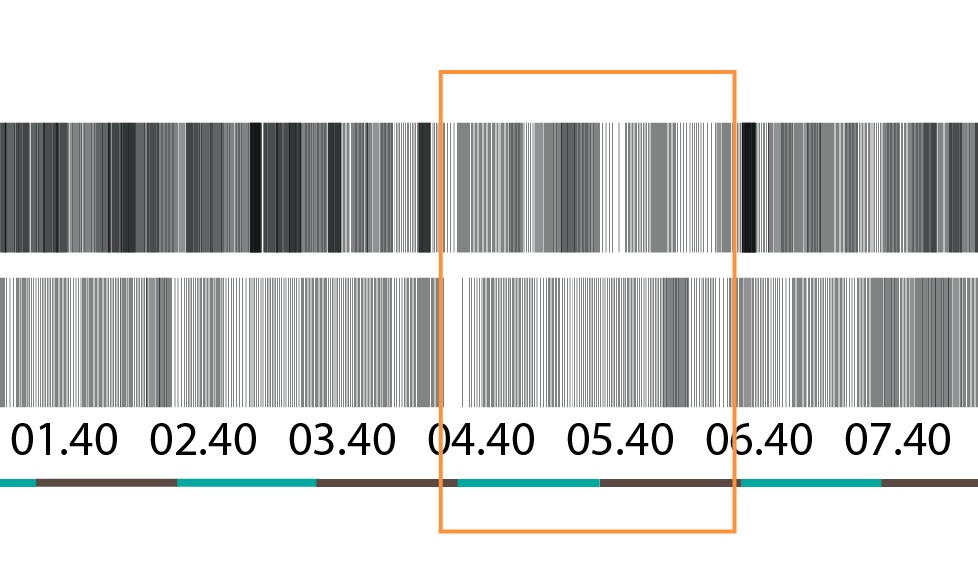One day on the internet is enough
Team Members
Erik Borra, Taina Bucher, Carolin Gerlitz, Anne Helmond, Esther WeltevredeIntroduction
This project aims to contribute to thinking about temporality or pace online by focusing on the notion of spheres and distinct media spaces. Pace isn’t the most important question, respect for the objects and the relation between objects and pace per sphere are also of interest in this study. Both in terms of how the engines and platforms handle freshness, as well as currency objects that are used by the engines and platforms to organize content. Moving beyond a more general conclusion that there are multiple presents or a multiplicity of time on the internet, we can try to start specifying how paces are different, and overlap, empirically. The aim is to specify paces and to investigate the relation between freshness and relevance per media space. The assumption is that freshness and relevance create different paces and that the pace within each sphere and plattform is internally different and multiple in itself.Research question
What is the pace of different spheres and social media spaces? One way to start thinking of 'pace' online is in terms of the upload frequencies. How can these paces be characterized? What is the relation between relevance and pace? And, what does the pace of a media space do to the pace of an issue? How relevant is freshness?Method
The issue under analysis is the 2010 Pakistan floods.- We selected 8 spheres and social media spaces: Facebook.com, Twitter.com, Wikipedia.org, Google.com, News.google.com, Blogsearch.google.com, Youtube.com, Flickr.com.
- For each of these media spaces, the queries are designed to fit the platform or engine. Content is organized and ranked differently per platform. Search engines return results for a query while micro-blogging platforms organize content around hash tags, keywords/tags prefixed by a hash sign, that are used for searching. Devices and platforms have dominant or preferred queries: e.g. in Google the query Pakistan Floods 2010 was recommended by the engine whilst in Twitter users decided on #pakistan as the most dominant hash tag (based on a comparative analysis between #pakistan, #pkflood, #pkrelief, !#pkfloods and !#helpPakistan, using the What the Hashtag?! service. Facebook is a special case since it is a platform that is not dominated by search, but rather by pages and groups as organizing mechanisms. We selected the top group and top page related to the 2010 Pakistan Floods. Facebook however, does have a search option and we also queried Facebook Search for Pakistan flood in Posts by Everyone, which returns mentions of Pakistan flood in All Post Types (Links, Status Updates and Wall Posts, Notes) by everyone.
- Most devices offer a (default) result page, which is ordered by relevance and a specific order by date search option. In first instance, pace online is thought of in terms of update frequencies. In other words, what is the speed of fresh content that is being uploaded and added to the index of the respective devices? In terms of the relation between objects and paces, the relation between relevance and time is of interest. For the devices that offer both a search by relevance and a search by date we included both (e.g. Google, Google News, Google Blogs, YouTube, Flickr).
- The selected search options of the devices and specified queries are collected by means of urls:
-
Wikipedia:
http://en.wikipedia.org/wiki/2010_Pakistan_floods
Flickr
Pakistan Floods 2010
Relevant: http://www.flickr.com/search/?q=Pakistan+Floods+2010
Recent: http://www.flickr.com/search/?q=Pakistan+Floods+2010&s=rec
!YouTube
Pakistan Floods 2010
Relevant (default): http://www.youtube.com/results?search_query=Pakistan+Floods+2010&aq=f
Recent (Sort by Upload date): http://www.youtube.com/results?search_type=videos&search_query=Pakistan+Floods+2010&search_sort=video_date_uploaded&suggested_categories=25%2C29&uni=3
Google News
Pakistan Floods 2010
Default: http://news.google.com/news/search?aq=f&pz=1&cf=all&ned=us&hl=en&q=pakistan+floods+2010
Sort by date: http://news.google.com/news/search?pz=1&cf=all&ned=us&hl=en&q=pakistan+floods+2010&cf=all&scoring=n
Google Blogs
Pakistan Floods 2010
Default: http://blogsearch.google.com/blogsearch?hl=en&ie=UTF-8&q=pakistan+floods+2010&btnG=Search+Blogs
Sort by date: http://blogsearch.google.com/blogsearch?hl=en&ie=UTF-8&q=pakistan+floods+2010&scoring=d
Google Web
Pakistan Floods 2010
Default: http://www.google.com/search?hl=en&ie=UTF-8&q=pakistan%20floods%202010&sa=N&tab=bw
Latest: http://www.google.com/search?q=pakistan+floods+2010&hl=en&prmd=nv&source=lnt&tbs=rltm:1&sa=X&ei=fsNqTPW6GI2IOOSokI4J&ved=0CA0QpwU
Facebook
GENERAL - Query: Pakistan Flood - Posts by Everyone - http://www.facebook.com/search/?flt=1&gl=1&lo=en_US&q=Pakistan%20Flood
GROUP - 3275 members Pakistan Flood 2010 http://www.facebook.com/group.php?gid=408153525623&v=wall
PAGES - 2212 members Flood in Pakistan - http://www.facebook.com/pages/Flood-in-Pakistan-Urgent-help-needed/148234231858334?v=wall
From the group we would like the changing number of Members, Photos, Videos, Links
From the pages we would like the changing number of People Like This, Photos, Videos, Links
Twitter
#Pakistan
http://search.twitter.com/search?q=%23pakistan
- From each of these urls, the content of the page is saved on a local computer with an interval of 5 minutes.
- Calculate the number of new updates or new results within the relavance setting for each interval and each platform/sphere.
Findings
tbc.Issues and Limitations
The main limitation is that changes cannot be recorded in real time but have to be studied according to the Intervals, which imposes an external metric on the pace of spheres and platforms. Moreover, although the internal difference and intensity of pace can be studied, time is presented as chronological and linear. To which extend the pace is based on a more complex, non-linear concept of time, in which particular activities are taken up at a later pointin time or have delayed effects. Because every platform has a different amount of objects (i.e. tweets, pictures, videos, URLs etc.) that may potentially change by each time interval studied, the amount of change (the possibility of things changing) will vary greatly from platform to platform. This poses some limitations as to comparing the different platforms (e.g. in Flickr potentially 20 objects on the front page may change whereas on Google 100 may potentially change).Not merely different amount of digital object displayed on each platform’s frontpage pose a difficulty to comparison and analysis, but also the actual amounts of new updates per interval studied. While significantly more changes will have occurred in Twitter than the amount of people that have joined a Facebook group in the same time interval, the question then becomes how to normalize the numbers or whether to operate with absolute numbers in visualizing the data.
Visualizations
 http://files.digitalmethods.net/wget/analysis.php?what=googleWwwRel10excl#
http://files.digitalmethods.net/wget/analysis.php?what=googleWwwRel10excl#

 Sleeping time Twitter and Facebook:
Sleeping time Twitter and Facebook:  Sleeping time Twitter and Facebook ++:
Sleeping time Twitter and Facebook ++: 
| I | Attachment | Action | Size | Date | Who | Comment |
|---|---|---|---|---|---|---|
| |
Artwork-1.jpg | manage | 80 K | 20 Aug 2010 - 13:45 | AnneHelmond | Sleeping time Twitter and Facebook |
| |
DMI_summerschool_paceonline-classics.jpg | manage | 282 K | 20 Aug 2010 - 13:49 | AnneHelmond | |
| |
DMI_summerschool_paceonline-pakistanfloods.jpg | manage | 274 K | 20 Aug 2010 - 13:49 | AnneHelmond | |
| |
DMI_summerschool_paceonline-template_anne.ai | manage | 433 K | 09 Sep 2010 - 10:15 | AnneHelmond | |
| |
one_day_is_enough___analysis-2.jpg | manage | 358 K | 20 Aug 2010 - 13:43 | AnneHelmond | |
| |
sleepingtime.jpg | manage | 116 K | 20 Aug 2010 - 13:43 | AnneHelmond | Sleeping time Twitter and Facebook |
| |
summerschool_pace.pdf | manage | 1 MB | 08 Sep 2010 - 14:34 | AnneHelmond | |
| |
svg.zip | manage | 136 K | 09 Sep 2010 - 10:16 | AnneHelmond | |
| |
twitter_facebook.ai | manage | 1 MB | 08 Sep 2010 - 14:36 | AnneHelmond |
 Copyright © by the contributing authors. All material on this collaboration platform is the property of the contributing authors.
Copyright © by the contributing authors. All material on this collaboration platform is the property of the contributing authors. Ideas, requests, problems regarding Foswiki? Send feedback


